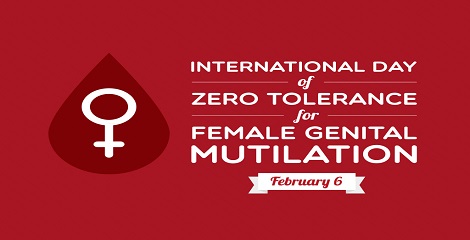To raise awareness about the female genital mutilation (FGM) and to promote its eradication, every year February 6 is celebrated as the International Day of Zero Tolerance to Female Genital Mutilation.
- Theme 2016 – “Achieving the new Global Goals through the elimination of Female Genital Mutilation by 2030”
 What is FGM?
What is FGM?
Female genital mutilation (FGM) aka female genital cutting or female circumcision comprises all procedures that involve altering or injuring the female genitalia for cultural or non-medical reasons.
- FGM cause severe bleeding and health issues including cysts, infections, infertility as well as complications in childbirth increased risk of newborn deaths.
It is internationally acknowledged as a violation of the human rights of girls and women.
UNICEF Report – 200 million girls and women living with FGM
In accordance with the UNICEF report, minimum 200 million girls and women worldwide have been concerned to female genital mutilation. Egypt, Ethiopia and Indonesia are the hub to FGM covering half of the suffered population.
- The highest prevalence of FGM again sat on to Somalia (98%), Guinea (97%) and Djibouti (93%) but the overall rate has been trimmed in 30 countries.
- Overall, the prevalence of FGM among teenage girls has dropped in the 30 countries, from 51 per cent in 1985 to 37 per cent today.
- The overall rate in the prevalence of FGM among teenage girls has been trimmed in 30 countries to 37% as compared to earlier 51% in 1985.
Out of 200 million FGM victims, there are 44 million girls of the age of 14 years or younger. The majority of girls have undergone FGM before their fifth birthday.




